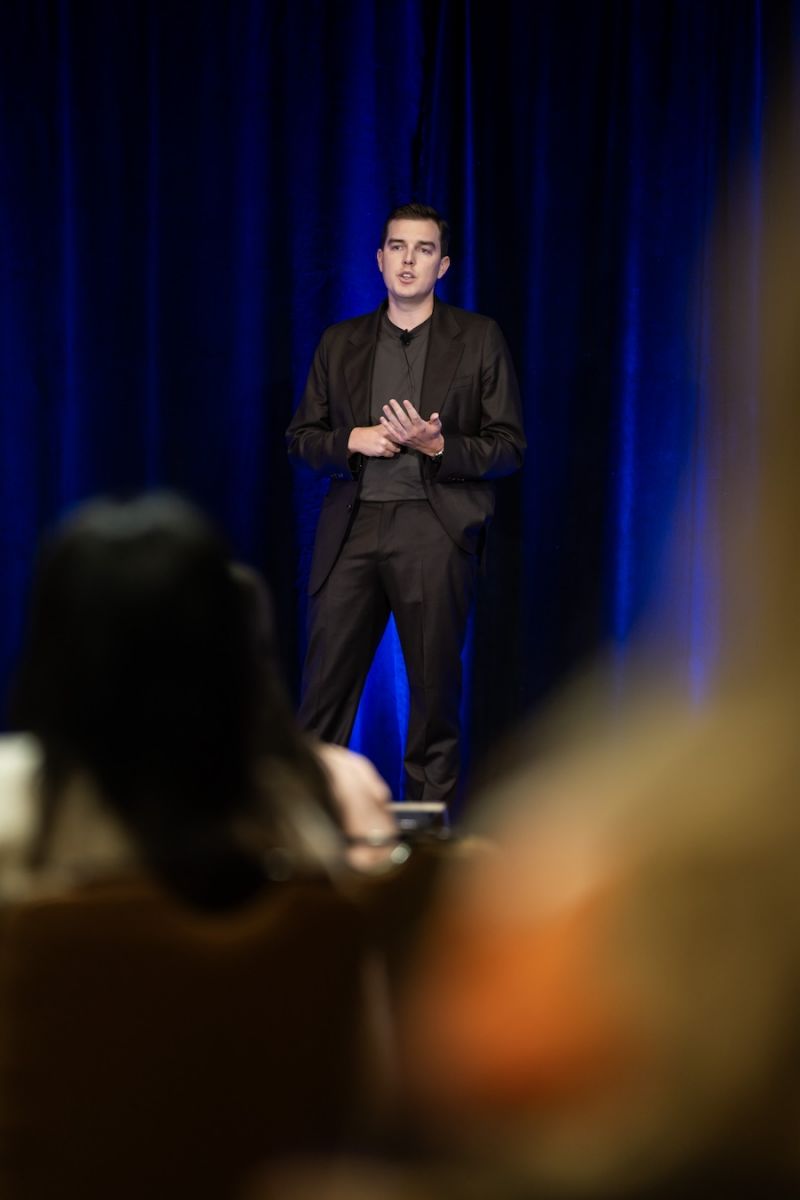Humanizing the Employee Experience in a Time of Increased Systems and Decreased Connection


Despite an explosion of HR tools and platforms, most employees still feel lost in their own companies. “How many of you feel like your organization makes it simple for employees to find what they need when they need it?” asked Gavin Paczosa, Head of North America at Humand during a thought leadership spotlight at From Day One’s Austin conference. Only a few hands went up.
“The way that we work has dramatically evolved,” he said. “But the experience of work—how we engage, connect, and have access to what we need—has not kept up.”
Across industries, teams are dispersed across time zones, channels are fragmented, and systems don’t talk to one another. “We’ve added more tools, but not more connection. More systems, but not more clarity,” Paczosa said. “In this mess of systems and logins, it’s easy to forget the most important part of every organization: the people.”
Humanizing at Scale
At the heart of Paczosa’s message is a deceptively simple question: how can companies humanize the employee experience at scale?
“To me, humanizing doesn’t mean just adding a wellness app or sending a survey at the end of the month,” he said. “Humanization comes from building systems and cultures where people feel informed, valued, and empowered to act without friction.”
That’s why, at Humand, the team focuses on creating what Paczosa calls a digital home for employees. “Because oftentimes we’re not in the office together,” he said. “This has to be a place where people don’t just log in; they belong.” When employees are informed, valued, and empowered, he says, they perform at their best—and stay engaged.
Communication, Connection, and Culture
To build that digital home, Paczosa pointed to what he calls the three Cs: communication, connection, and culture.
As work becomes increasingly digital, he urged leaders to “meet employees where they actually are,” the spaces where they chat with managers, recognize peers, and collaborate on projects. “When you put engagement first, every HR process follows naturally,” he said. “Policies get read. Training gets completed. Surveys get done on time.”
The key isn’t adding yet another platform, but unifying what already exists. Humand’s approach integrates HR systems, learning management tools, and communication channels into one seamless interface. “No workflow should be more than a tap or a click away,” Paczosa said.
That simplicity, paired with the use of Humand’s AI assistant, Sami, helps employees find what they need instantly, from pay stubs to compliance training, without hunting through multiple systems, he says.
Building for Both Employees and Admins

The employee experience, Paczosa emphasized, has to work on both ends: for the people using the system and for the HR teams running it. “Many of you have already invested heavily in enterprise systems,” he said. “We’re not going to ask you to rip and replace those. What we do is integrate with them.”
The result, he said, is a “win-win”—employees get a single, intuitive access point, while administrators can keep using the tools they already know and trust. The platform’s flexibility allows organizations to turn features on and off as they evolve. “Just like a physical home, your digital home deserves care, attention, and the occasional refresh,” Paczosa said.
Paczosa shared a case study of success. When Siemens wanted to create a digital home for its global workforce, Humand helped build a unified system centered on communication, connection, and culture. The results were striking: 98% monthly engagement and 95% workflow completion across a worldwide employee base, he says.
With all workflows running through one platform, Siemens’ HR teams could finally see the full picture of the employee experience—“no more guessing, just actionable data,” Paczosa said.
The Human Future of Work
For Paczosa, this evolution is not just technological—it’s deeply human.
He compared the workplace to an airport: HR admins are the air traffic controllers, managing complex systems behind the scenes, while employees are the pilots, who need only the essential information in one streamlined dashboard. “It’s not about ripping and replacing your systems,” he said. “It’s about creating the right access point for the people who need it most—your employees.”
Editor’s note: From Day One thanks our partner, Humand, for sponsoring this thought leadership spotlight.
Chris O’Keeffe is a freelance writer with experience across industries. As the founder and creative director of OK Creative: The Language Agency, he has led strategy and storytelling for organizations like MIT, Amazon, and Cirque du Soleil, bringing their stories to life through established and emerging media.
(Photos by Josh Larson for From Day One)
The From Day One Newsletter is a monthly roundup of articles, features, and editorials on innovative ways for companies to forge stronger relationships with their employees, customers, and communities.